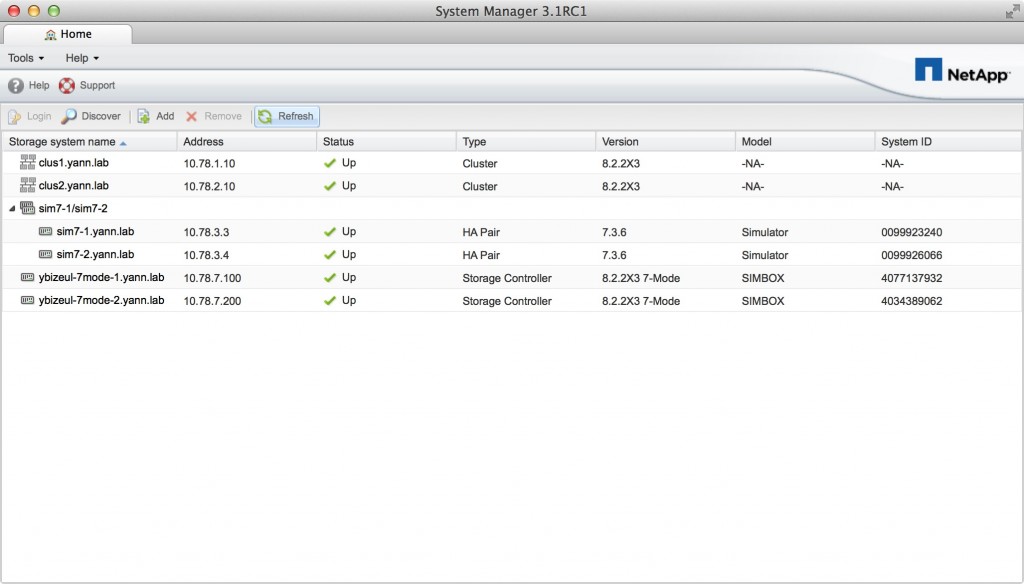NetApp Virtual Appliances like OnCommand Unified Manager 6 or OnCommand Performance Manager 1 are normally deployed within VMware ESX hypervisors. It can work on other hypervisors as well but it requires additional steps to workaround an error that occurs when you try to set the IP address to something else than DHCP. The purpose of this article is to explain how to make IP configuration available when you setup the virtual appliance in a lab-on-laptop lab, or anywhere else that is not a ESX server.
Archives de catégorie : OnCommand
System Manager 3 for Mac
Here is an integrated version of System Manager 3 for the Mac.
Of course, this is an absolutely not supported version of System Manager. The reason why I decided to provide it to the public is because it does not use any private materials from NetApp, and is only based on the Linux version of System Manager, which is available on NetApp Support Site.
You can download it here, and you need Mac OS 10.7 minimum to run it.
This is different from the version available on ToolChest web site, and I thank Jesse for his work because without it, I wouldn’t have the idea to work on this version!
Here is a screenshot of the main window with the tab view on top, each controller you open will have its own tab.
System Manager 3 for Mac requires Java SDK 1.7 (JRE is not enough) and Mac OS 10.7.
Note that if you run it without installing the JDK, Mac OS X will automatically propose to install Java. Don’t do this as you won’t get a JDK this way, you must download it from Oracle web site and install it manually.
[EDIT] Link updated to point to version 3.1RC1
Installing OnCommand Unified Manager on CentOS
CentOS is my favorite Linux distribution because it is the closest to RedHat you can find (for a reason). And I like RedHat for the simple reason that it is the most supported Linux distribution for any enterprise applications. I know usually both RedHat and SuSE are supported, but SuSE and I was never a love story and I will save you the history of this little drama for this time.
So, the idea is not to run CentOS in a production environment, unless you really have the heart of a warrior and do not care about being supported by a rock solid editor, but instead to run your OnCommand Core lab on a free OS.
I used a CentOS 6 minimal install for this tutorial.
